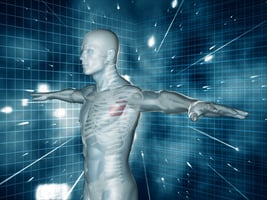The mayo clinic (*1) provides a list of these common symptoms to help people manage their stress:
|
On your body
|
On your mood
|
On your behavior
|
|
Headache
|
Anxiety
|
Overeating or undereating
|
|
Muscle tension or pain
|
Restlessness
|
Angry outbursts
|
|
Chest pain
|
Lack of motivation or focus
|
Drug or alcohol misuse
|
|
Fatigue
|
Feeling overwhelmed
|
Tobacco use
|
|
Change in sex drive
|
Irritability or anger
|
Social withdrawal
|
|
Stomach upset
|
Sadness or depression
|
Exercising less often
|
The Mayo clinic (*2) also lists these conditions that can occur with chronic stress levels, which is what many people are going through at this time:
- Sleep problems
- Digestive problems
- Heart disease
- Weight gain
- Memory and concentration impairment
Osteopathic manual techniques (OMT) can help alleviate some of these symptoms of stress. Some techniques help decrease muscle tension, reduce the perception of stress, improve body homeostasis and changes the heart rate. These techniques support the body’s residence and homeostasis during this stressful season.
OMT can help treat headaches by releasing the tight muscles that compress the nerves and blood vessels in the neck and that hold the bones of the neck, cranium and face. Prolonged stress is one cause of headaches, especially when the stressor is not dealt with properly.
... OMT can release tight muscles all over the body to help relax it, leading to less tension and pain. The relaxing of these muscles can also help fatigue because these tight muscles zap all the energy from the body to maintain their tightness. With less tension and decreased pain, OMT can indirectly help relax the patient’s mind and emotions through this muscular release.
OMT can also release structures surrounding the organs or the nerves supplying the organs. The release of these structures helps decrease digestive, urinary, heart and sleep problems. Structures that block, compress or stretch organs can cause the organs to not function properly which lead to the conditions mentioned above. These structures that are worked on can be bone, muscle, ligament, tendon. blood vessel,  lymph vessels, and nerves. In addition, these structures with prolonged stress can lead to health problems, if they are not dealt with immediately and properly.
lymph vessels, and nerves. In addition, these structures with prolonged stress can lead to health problems, if they are not dealt with immediately and properly.
Problems such as upset stomachs, weight gain and memory and concentration impairments can be caused by the compression or stretching of the nerves and blood vessels in the body. This occurs when these structures are caught in a prolonged compression or stretching via the stress response where our bodies tighten up, ready to take on the stressor. When the muscles tighten up, they entrap the nerves and blood vessels. When this entrapment lasts longer than normal, as in this pandemic; this action alters the function of the organ and thus leading to these problems.
OMT helps reverse these problems by freeing their nerve and blood connections, thus allowing the body to restore itself to its normal function. OMT takes into account the whole body and thus its connections, which is why OMT can help alleviate the symptoms and conditions of stress.
Osteopathic Manual Practitioners as do other healthcare providers advocate the strategies that The Mayo clinic (*3) provides to combat stress, such as:
- Getting regular physical activity
- Practicing relaxation techniques, such as deep breathing, meditation, yoga, tai chi or massage
- Keeping a sense of humor
- Spending time with family and friends
- Setting aside time for hobbies, such as reading a book or listening to music
- Volunteering
- Get plenty of sleep
- Eat a healthy, balanced diet
- Avoid tobacco use, excess caffeine and alcohol, and the use of illegal substances
These strategies help maintain the health and healing of the patients especially after treatment. These strategies help to reinforce the treatments from an OMT , and helps support a healthier state of life... especially through the stressful times that we are experiencing today.
References:
*1 https://www.mayoclinic.org/healthy-lifestyle/stress-management/in-depth/stress-symptoms/art-20050987
*2 https://www.mayoclinic.org/healthy-lifestyle/stress-management/in-depth/stress/art-20046037
*3 https://www.mayoclinic.org/healthy-lifestyle/stress-management/in-depth/stress-symptoms/art-20050987

 lymph vessels, and nerves. In addition, these structures with prolonged stress can lead to health problems, if they are not dealt with immediately and properly.
lymph vessels, and nerves. In addition, these structures with prolonged stress can lead to health problems, if they are not dealt with immediately and properly.